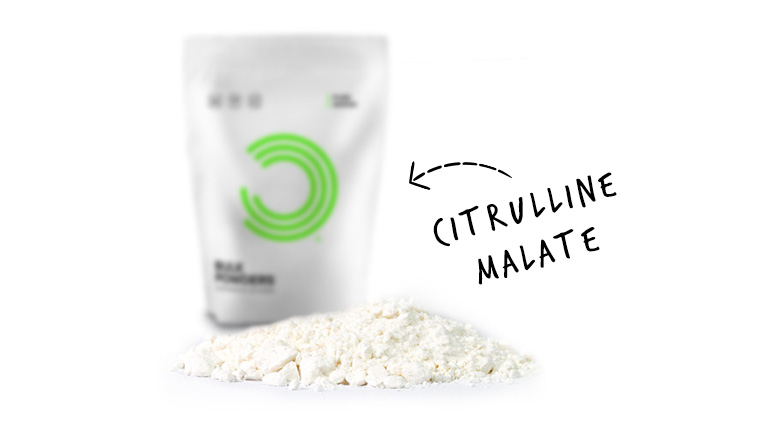Supplements are all the rage within the fitness industry. Everyone wants to make sure they’re supplying their body with the fuel and tools to achieve optimal results. Besides from the most common supplements, including Creatine Monohydrate, Whey Protein and Branched Chain Amino Acids, I believe there’s one more supplement which you should certainly consider introducing to your stack.
Citrulline Malate: What is it?
- Citrulline Malate is made up of L-Citrulline, which is an amino acid, and Malate (malic acid).
- It’s often an added ingredient to pre-workouts, and this helps to provide a greater ‘pump’ when resistance training.
About Citrulline
- L-Citrulline (Citrulline) derived its name from citrullus, which is the Latin name for watermelon, as the fruit contains the highest amount of the amino acid.
- Citrulline increases blood arginine levels which in turn assists the synthesis of Nitric Oxide.
- Nitric Oxide increases blood flow, which enables greater transportation of nutrients to muscles during exercise and as a result increases vasodilation.
- As well as providing muscles with more nutrients quicker, increased blood flow also results in quicker removal of waste products from the muscles, EG Lactate, and Ammonium; aiding muscular endurance and reducing fatigue.
About Malate
- Malate aids in the tricarboxylic acid (TCA) cycle, or, ‘Kreb Cycle’ which is the process of creating energy through oxidisation. The Kreb Cycle is basically how your body creates energy using oxygen breaks down acetyl-CoA from macronutrients into carbon dioxide and Adenosine Triphosphate (ATP), which is chemical energy.
- As a result, malate increases the rate of oxidation and therefore creation of energy, which leads to a reduction in fatigue.
On the whole, Citrulline Malate has been proven to increase blood flow and supply the muscles with an elevated level of nutrients and reduce fatigue while improving muscular endurance during exercise.
How to Supplement Citrulline Malate
A number of studies have been carried out which compare the effects of different amounts of citrulline malate. A 6g serving is most suitable, enabling subjects to reap all of the benefits with little to no side effects. 8g is the highest recommended dosage, but supplementing this much can cause stomach aches, so it’s best to stick the 6g and stay on the safe side!
Ideally, take Citrulline Malate 1 hour before exercise to improve performance.
An Example of Results
One study found that weightlifters consuming 8g of Citrulline Malate were able to perform up to 54.92% more repetitions when compared to a placebo group during a test in which As Many Reps As Possible (AMRAP) over 8 sets were to be performed. Additionally, muscle soreness after training was reduced by 39.74% (24 hours after), and 41.79% (48 hours after) compared with a placebo group (source linked below with reference).
Take Home Message
The results are in, and Citrulline Malate certainly has its proven benefits. If you’re looking for the final addition to your supplement stack, you should certainly consider using Citrulline Malate.
References
- https://examine.com/supplements/citrulline/
- Pérez-Guisado J, Jakeman PM. Citrulline malate enhances athletic anaerobic performance and relieves muscle soreness. J Strength Cond Res. (2010)
Related articles
Looking to learn more? We believe that every person, with support, has the right to transform their lives through fitness. That’s why we’ve put together hundreds of articles with expert advice, all to help you on your fitness journey.
How much l arginine should I take? What to eat before a workout
Cutting edge vs Grenade Beta alanine benefits
What is taurine? A guide to pump pre-workout
Supplements for focus and energy Elevate™ voted ‘Best Overall Pre-Workout’
Best time to eat a protein bar? What is protein coffee?
Citrulline malate guide What does pre-workout do?
Should you take pre-workout before cardio?
















